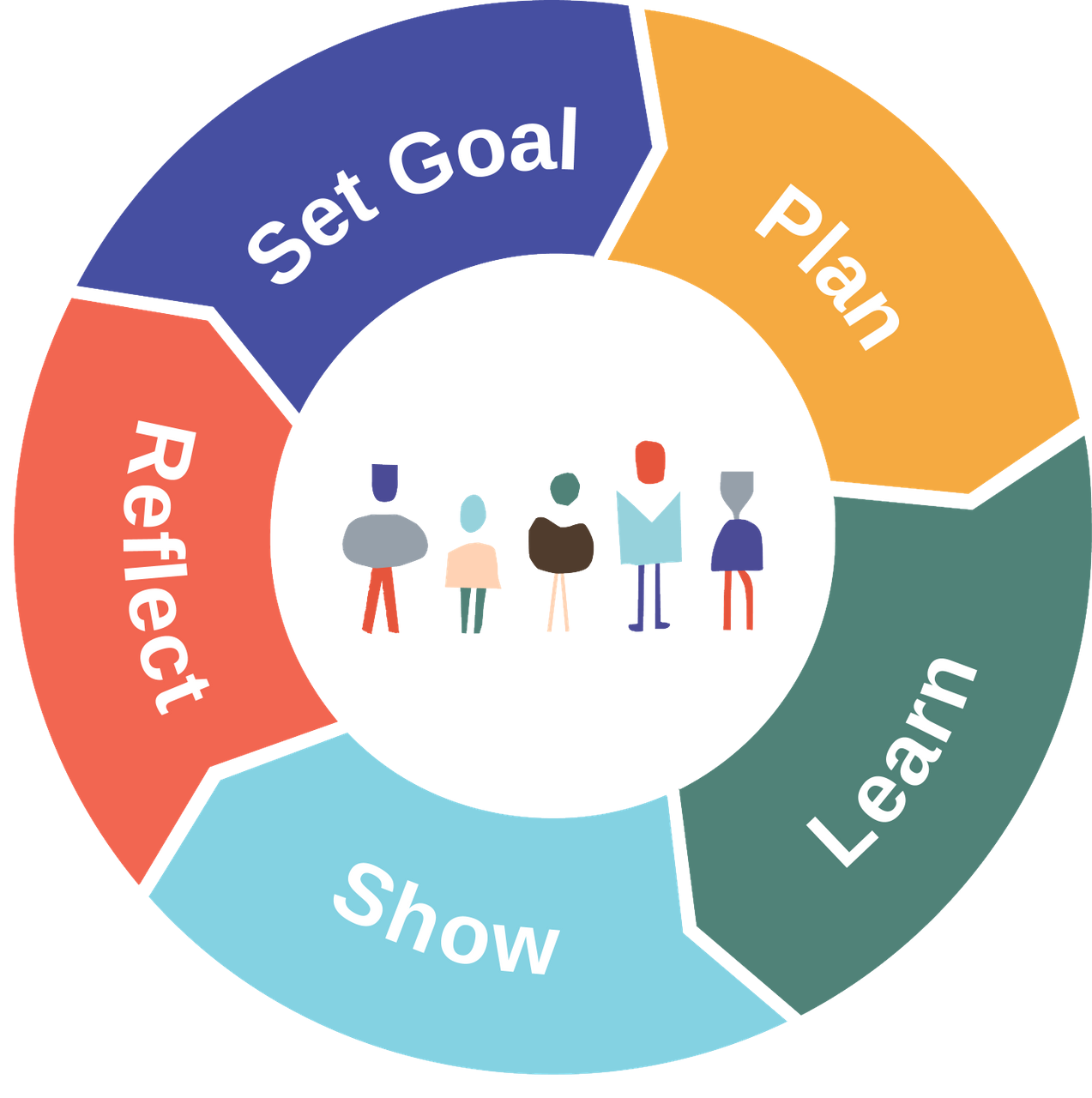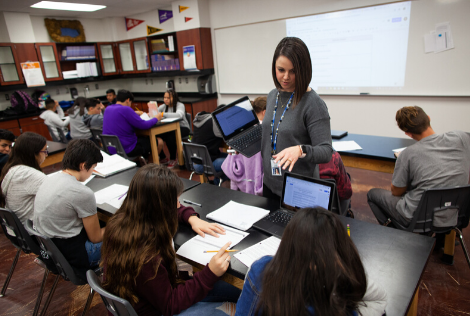The Self-Directed Learning Cycle

Summit Learning uses a Self-Directed Learning Cycle in its curriculum to help students prepare for life before and after graduation. This process promotes student development and autonomy in learning. With classrooms designed to promote self-direction, students learn and deliberately practice how to learn.
In the Self-Directed Learning Cycle, teachers work with students to:- reflect on what they've learned
- set goals for what they want to learn
- plan for how they will reach their goals
- learn new facts, skills, or ideas
- show or demonstrate their learning, then reflect
By practicing and developing self-direction, students build skills and habits they can apply in life well beyond graduation. This gives students a sense of empowerment that keeps them motivated and engaged. Eventually — with support — students internalize the Self-Directed Learning Cycle, giving them a foundation for success.
Examples of Student Goals
Goals can be anything from simple, daily tasks to larger objectives. Here are examples of a typical goals:
- "Today, I will make vocabulary flashcards for the Figurative Language unit and get 80% of the questions correct on tomorrow's assessment."
- "I will practice self-control to improve my classroom focus. Tomorrow in math class, I'll sit away from my friends who often distract me in class."
- "I will earn grade-level skill on Argumentative Claim on my next English project by paying special attention to the feedback from my teacher. I will work in class and over the weekend so that I can turn in my project on Wednesday."


